The white porcelain dial features a delicate and charming hand-painted romantic scene, depicting a serene lady seated in a pastoral countryside landscape, accompanied by what appears to be a small dog. The black enamelled Arabic numerals and elongated, elegant fassonzeiger hands ensure clear readability while adding noble and refined character to the piece. Despite minor wear at the bottom of the dial—a natural result of time—the painting remains vivid and sharp, lending even more character to this historic watch.
The verge fusee movement, visible and complete, is in excellent condition. The back plate reveals the hallmark engineering of Geneva’s finest early 19th-century watchmakers, with clean finishes, symmetrical pins, and a spiral hairspring. This type of mechanism, which predates the lever escapement, is highly prized by collectors for its rarity and robust construction. The watch includes its original winding key, a highly valued detail that enhances the ensemble’s authenticity.
Acquiring this watch means owning not only a functional object, but also a work of art and a testimony to an era when technique and beauty were inseparable. This piece will surely stand out in any display case or serve as a refined example of antique watchmaking. Due to its aesthetics and historical content, it would also make an excellent gift for lovers of period horology or a valuable heritage acquisition.
A true opportunity for those who know how to appreciate the art of time and wish to own a piece that combines quality, beauty, and historical value.
Measurements: Diameter: 47 mm (1.85 in). Weight: 67.7 gr.
History of JR Mauris
JR Mauris was one of many watchmakers active in Geneva during the golden age of Swiss watchmaking, in the early 19th century. Geneva was already a hub of horological innovation, home to craftsmen specialized in every stage of production, from case making to the complex inner mechanisms. Although little is known about Mauris in current records, his name on such a finely made piece suggests he was part of the established circle of watchmakers in the city between 1790 and 1820.
During this period, Swiss horology was undergoing a decisive transformation: the transition from the verge escapement to more precise systems such as the lever escapement, the refinement of the balance spring, and the growing standardization of components to allow for increased production. However, watches like this were still handcrafted in small workshops with admirable attention to detail.
The use of 18K gold and the painted enamel dial were typical of watches intended for wealthy clients. Romantic enamel scenes were especially popular among French and British buyers, reflecting the aesthetic tastes of the late Neoclassical period.
Like other watchmakers of the time, Mauris likely participated in the établissage system, in which different craftsmen contributed components to a central assembler. This method ensured high quality in each part’s finishing.
Today, pieces like this, signed by lesser-known makers, are highly valued for their rarity, artistic and mechanical quality, and because they represent a fragment of horological history not dominated solely by great names such as Breguet or Le Roy, but by a network of artisans whose skill was no less remarkable.






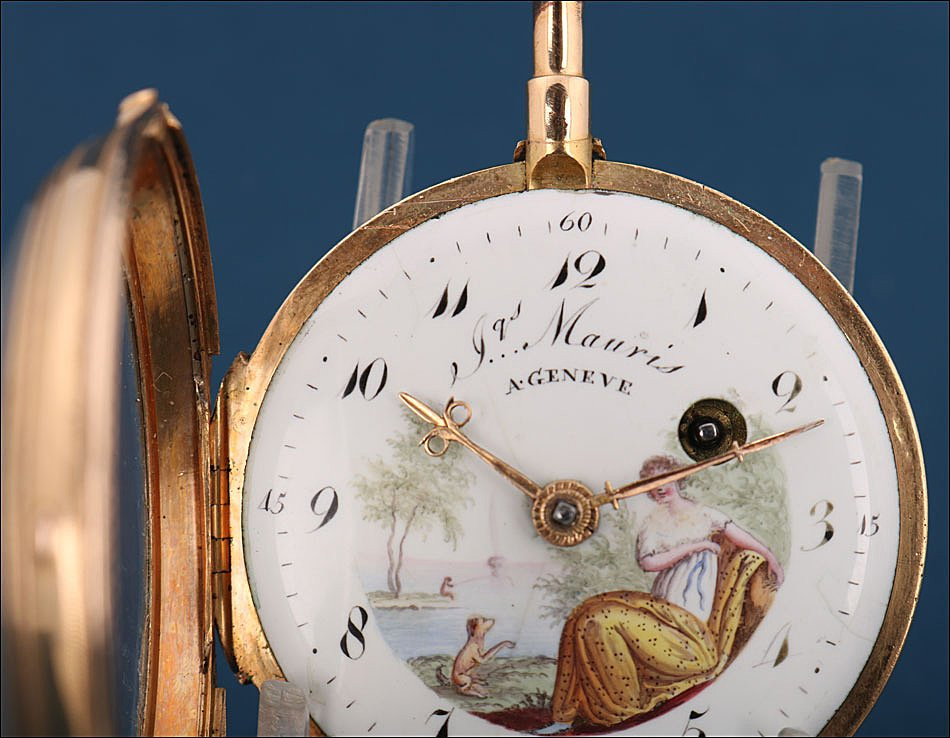
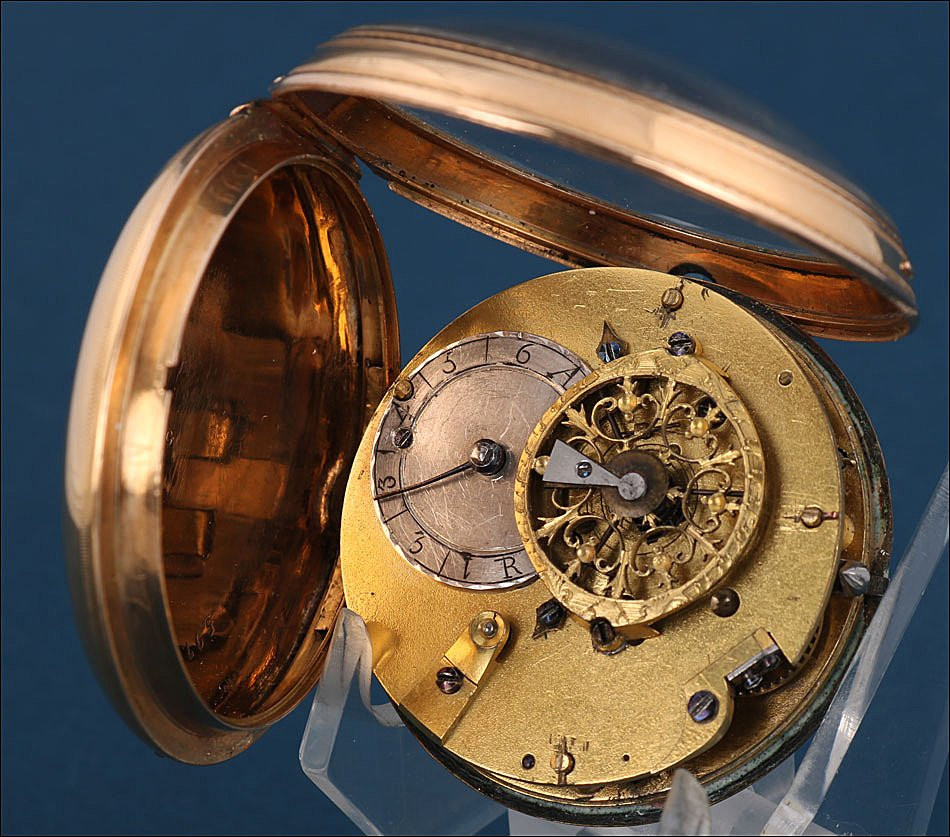
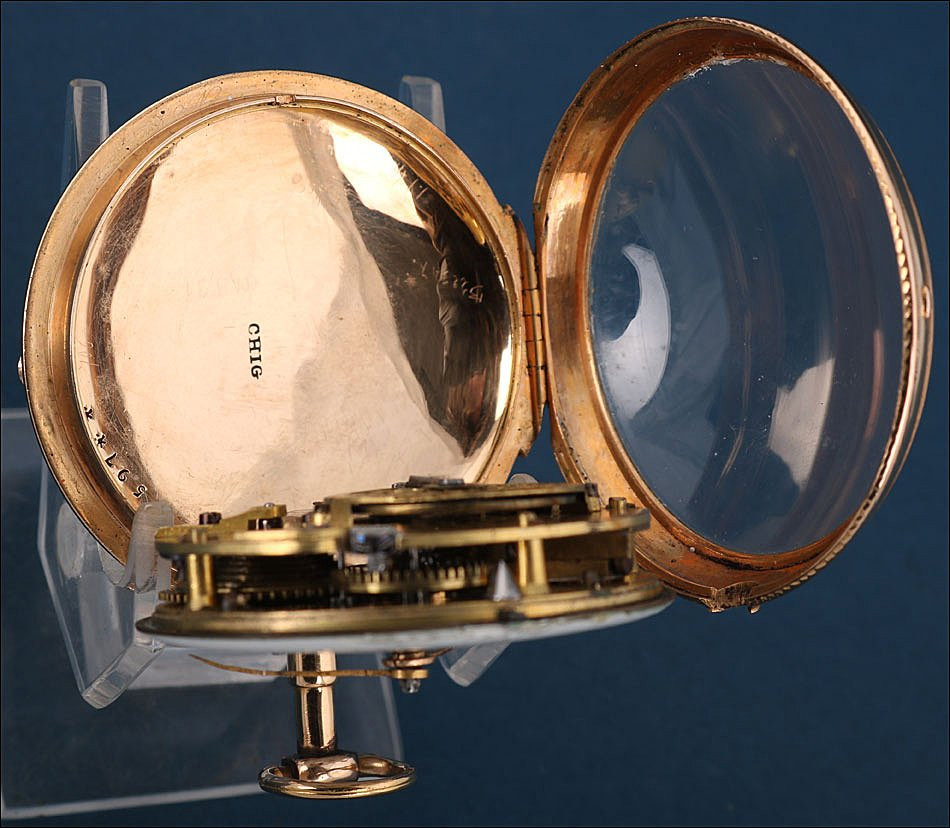
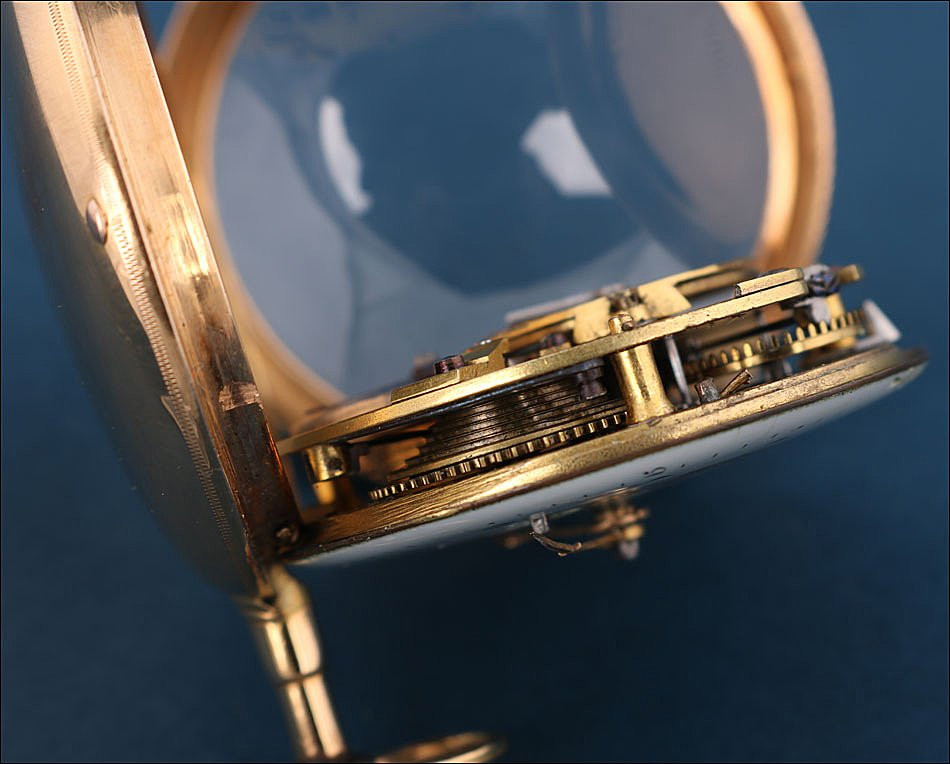
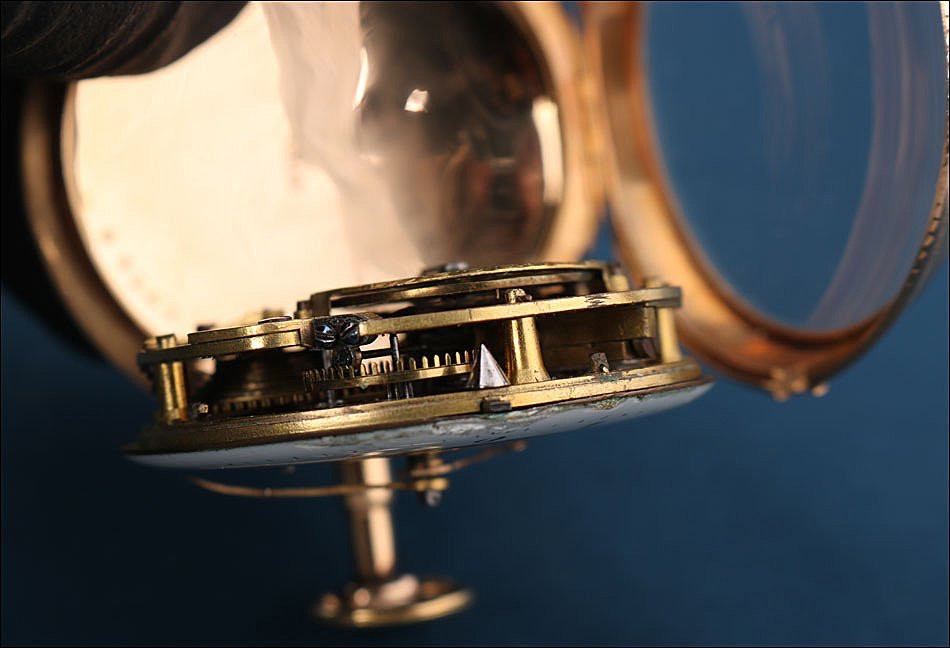




















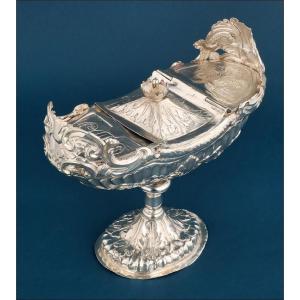





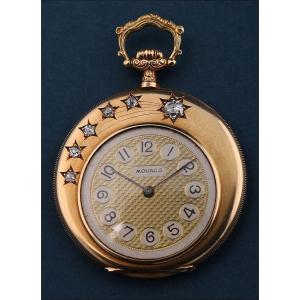





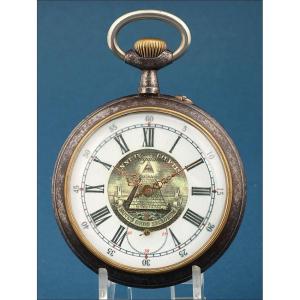






 Le Magazine de PROANTIC
Le Magazine de PROANTIC TRÉSORS Magazine
TRÉSORS Magazine Rivista Artiquariato
Rivista Artiquariato